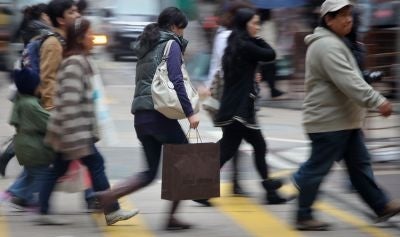Your support helps us to tell the story
From reproductive rights to climate change to Big Tech, The Independent is on the ground when the story is developing. Whether it's investigating the financials of Elon Musk's pro-Trump PAC or producing our latest documentary, 'The A Word', which shines a light on the American women fighting for reproductive rights, we know how important it is to parse out the facts from the messaging.
At such a critical moment in US history, we need reporters on the ground. Your donation allows us to keep sending journalists to speak to both sides of the story.
The Independent is trusted by Americans across the entire political spectrum. And unlike many other quality news outlets, we choose not to lock Americans out of our reporting and analysis with paywalls. We believe quality journalism should be available to everyone, paid for by those who can afford it.
Your support makes all the difference.For decades Hong Kong has considered itself one of the world's top shopping destinations, a place where bargains can be found and the variety of goods available is unequaled anywhere in the world.
But times seem to be changing - and fast. Spiraling rents and the rising influence of mainland Chinese tourists - a group that now accounts for more than 60 percent of annual visitors to town - appear to be narrowing the choices found in Hong Kong and forcing some of the city's more traditional retail outlets out of business.
In the 1970s, the retail landscape in Hong Kong was dominated by massive Chinese emporiums, selling everything from cheap clothes to cheap antiques and souvenirs. But their numbers have plummeted from an estimated 300 to just eight - and even those remaining have had to "re-brand" themselves by packing their shelves with such items as Chinese medicines and herbs.
Of course, Chinese tourists can get these kinds of goods in the cities they live and even if they might cost a little more back home, that's not exactly what they come to Hong Kong for anyway.
Hong Kong welcomed 22.7 million Chinese tourists last year - out of a total of 36 million over 12 months - which was a massive rise from the 7.5 million who came in 2003. And the main focus of their visits is shopping, but of the distinctly luxurious kind.
Chinese visitors to Hong Kong spend more than any other group - on average around HK$12,000 (1,100 euros) each every time they come here.
And so mass retailers are fast disappearing from the city's main shopping districts of Tsim Sha Tsui, Causeway Bay and Central and are being replaced by jewelry and watch shops.
"The change is being driven by the expensive tastes of mainlanders," one property agent told the South China Morning Post newspaper here.
The massive Luk Fook Jewellery chain - which alone has 15 outlets across Hong Kong - says it derives more than 60 percent of its sales from mainland Chinese shoppers, while 85 percent of custom at the flagship store of Emperor Watch & Jewellery comes from the same source.
That flagship store - on the busy Canton Road in the heart of the Tsim Sha Tsui shopping district - is rented for HK$3 million (275,000 euro) per month, and covers 1,200 square feet.
A prime example of just how crowded the market is becoming with these outlets is the Park Lane Shopping Boulevard which has five jewelry stores packed into its 300-meter length.
And with retail rents expected to rise from between 10 to 20 percent in Hong Kong this year, it appears that high-end products are the only way forward for retailers.
MS

Join our commenting forum
Join thought-provoking conversations, follow other Independent readers and see their replies
Comments